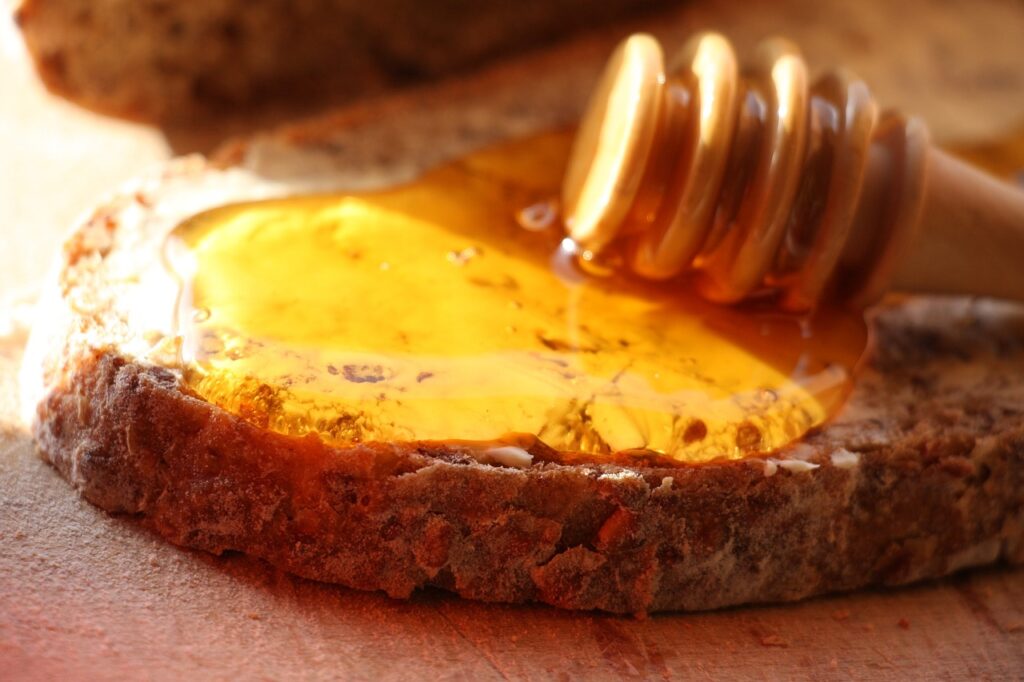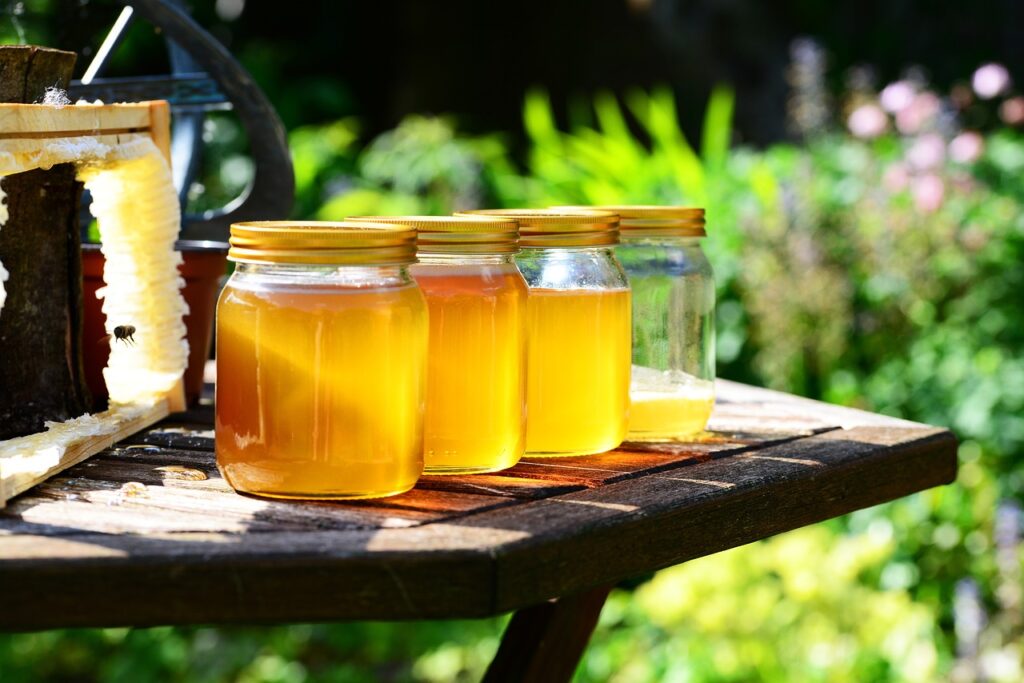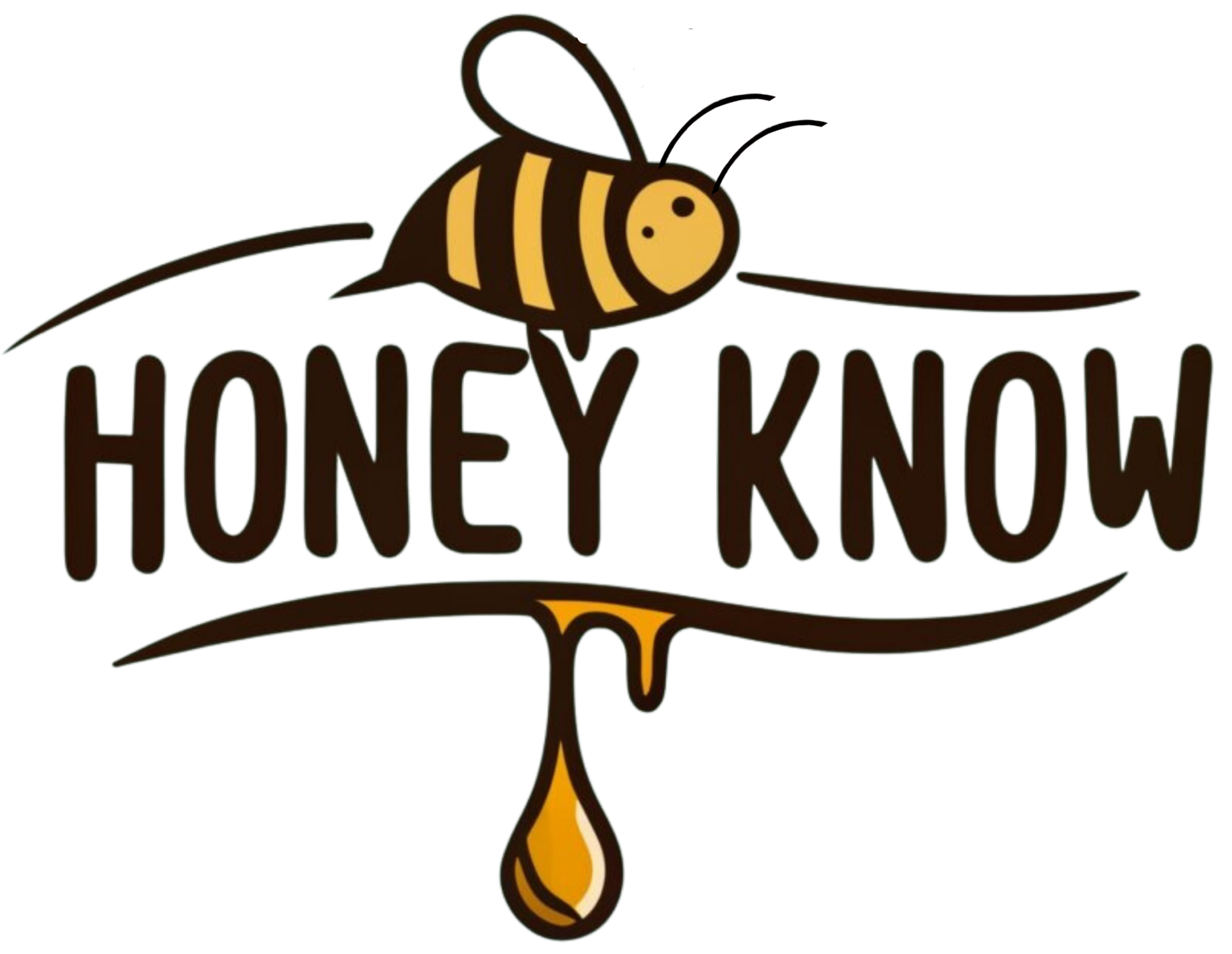So you’ve decided to sweeten up your morning tea with a drizzle of golden honey, but have you ever wondered if what you’re spooning into your cup is the real deal? In a world where food fraud is becoming increasingly prevalent, it’s important to know if your honey is actually honey. Thankfully, there are a few simple tricks you can use to determine its authenticity. From conducting the “thumb test” to examining the label closely, this article by Better Homes & Gardens will guide you through the process of ensuring your honey is pure and delicious.

Why It’s Important to Know if Your Honey is Actually Honey
When you dip a spoonful of honey into your tea or spread it over your toast, you expect to enjoy the sweet, golden nectar that has been cherished for centuries. But did you know that not all honey is created equal? In fact, there’s a growing concern about the authenticity of honey and the potential health risks associated with consuming fake or adulterated honey. Additionally, the production and distribution of counterfeit honey can have a negative impact on the environment. Therefore, it’s crucial to understand why it’s important to know if your honey is actually honey.
The Issue of Fake Honey
Fake honey refers to an adulterated or counterfeit product that is marketed and sold as pure honey. It can be produced by diluting genuine honey with water, adding artificial sweeteners, or even substituting honey with other syrups such as corn syrup or rice syrup. The issue of fake honey has become increasingly prevalent, with reports indicating that a significant portion of honey on store shelves may not be authentic.
Health Concerns
Consuming fake honey can have serious health implications. Adulterated honey may contain contaminants, such as antibiotics or heavy metals, which are used in the production process. These substances can be harmful to human health and may cause allergic reactions or even long-term damage to the body. Additionally, some studies have found that consuming fake honey may lead to digestive issues or contribute to the risk of developing chronic diseases.
Environmental Impact
The production and distribution of fake honey also pose a threat to the environment. Counterfeit honey often originates from unregulated or unsustainable practices, such as illegal beekeeping operations or the use of pesticides that harm bee populations. These practices contribute to the decline of honeybee colonies, which are essential pollinators for many plants and crops. Protecting the integrity of honey production is therefore not only crucial for our health but also for the preservation of our ecosystem.
What Exactly is Fake Honey?
To detect fake honey, it’s important to understand the different types of fake honey and the common ingredients used:
Understanding the Different Types of Fake Honey
One type of fake honey is diluted or adulterated honey, where genuine honey is mixed with water or other substances to increase profits. Another type is honey that has been heated, processed, or ultra-filtered to remove pollen and other natural components. This process not only alters the taste and nutritional value but also makes it difficult to determine the honey’s origin or authenticity.
Common Ingredients in Fake Honey
Some common ingredients found in fake honey include corn syrup, rice syrup, or beet syrup. These additives are cheaper substitutes for genuine honey and can pass off as real due to their similar color and viscosity. Artificial sweeteners or flavorings may also be added to mimic the taste of honey. The presence of these ingredients can significantly compromise the quality and nutritional value of the product.
How Does Fake Honey End Up on Store Shelves?
The presence of fake honey on store shelves can be attributed to various factors, including the lack of regulation, misleading labeling, and adulteration of honey.
Lack of Regulation
The honey industry is currently facing a lack of comprehensive regulations, making it difficult for consumers to differentiate between genuine and fake products. With minimal oversight, unethical practices can go undetected, allowing counterfeit honey to infiltrate the market.
Misleading Labeling
Some honey brands may engage in misleading labeling practices, such as making vague claims or using deceptive packaging that promotes the image of natural, pure honey. These tactics can mislead consumers into purchasing fake honey without realizing it.
Adulteration of Honey
Adulteration occurs when genuine honey is mixed with other sweeteners or additives. This process is often done to lower production costs and increase profits. The adulterated honey can then find its way onto store shelves, deceiving unsuspecting consumers.
Safety and Quality Control Measures for Honey
To ensure the authenticity and quality of the honey you consume, it’s important to be aware of the safety and quality control measures in place for genuine honey.
Quality Standards for Genuine Honey
Regulatory bodies and industry organizations have established quality standards that genuine honey must meet. These standards often include specific criteria for moisture content, pollen concentration, and absence of contaminants. For example, in the United States, the United States Department of Agriculture (USDA) has strict guidelines that honey producers must adhere to in order to be certified as pure honey.
Certifications to Look For
When purchasing honey, look for certifications from reputable organizations, such as the USDA Organic certification, which ensures that the honey has been produced following strict organic practices. The True Source Honey certification is another reliable indicator that the honey has been ethically sourced and meets traceability standards.
Trusted Sources and Brands
To increase your chances of purchasing genuine honey, consider buying from trusted sources and brands that have established a reputation for quality. Local beekeepers and farmers’ markets are often a good place to find genuine, locally produced honey. Additionally, conducting research and reading reviews can help you identify brands that prioritize transparency and authenticity.

Simple Tests to Check if Your Honey is Authentic
Several simple tests can help you determine the authenticity of your honey. While these methods are not foolproof, they can provide some initial indications of whether the honey you have is likely to be genuine.
The Water Test
Fill a glass with water and add a tablespoon of honey. Pure, unadulterated honey should settle at the bottom of the glass without dissolving or leaving any residue. If the honey dissolves or forms clusters, it may contain added ingredients or be adulterated.
The Flame Test
Dip the tip of a matchstick into the honey and strike it against the matchbox to create a flame. Genuine honey will light the match easily, due to its natural sugar content. If the honey fails to ignite the match or if the flame extinguishes quickly, it is likely adulterated or diluted.
The Bread Test
Spread a teaspoon of honey over a slice of bread and observe its interaction with the bread. Genuine honey tends to be a natural preservative and should inhibit mold growth, keeping the bread fresh for an extended period. If the honey fails to prevent mold formation or if the bread becomes soggy quickly, it may contain additives or be of poor quality.
Flavor, Texture, and Color: Clues to Identify Real Honey
Aside from performing tests, you can rely on your senses to assess the authenticity of honey. Pay attention to the flavor, texture, and color, as these characteristics can provide valuable clues.
Taste Variations Based on Floral Sources
Genuine honey derives its distinct flavor from the nectar collected by bees from specific floral sources. The taste can vary depending on the type of flowers the bees have foraged on. For example, clover honey has a mild, delicate flavor, while buckwheat honey is dark and robust. If the flavor seems generic or unfamiliar, it may indicate the presence of additives or dilution.
Viscosity and Crystallization
When it comes to texture, authentic honey exhibits unique viscosity and may crystallize over time. Natural honey is usually thick and viscous, whereas fake honey tends to be thinner and runnier. Crystallization is a natural process that occurs due to the high sugar content in honey. If your honey remains permanently liquid or crystallizes unevenly, it may be a sign of adulteration.
Color Variations and Their Significance
The color of honey can vary depending on its floral source and processing methods. Generally, lighter-colored honey is milder in flavor, while darker honey tends to have a more robust taste. Honey that claims to have a specific floral source should correspond to the expected color. If the color seems unusually bright or artificial, it may indicate the presence of additives or artificial coloring agents.

Packaging and Labeling: What to Look For
When purchasing honey, carefully examine the packaging and labeling to ensure that you are getting a genuine product.
Transparent Labeling
Look for honey brands that provide transparent labeling, including the honey’s country of origin, batch number, or traceability information. Avoid vague or generic descriptions, such as “blended honey,” as they may indicate a lack of transparency.
Traceability and Origin
Ideally, choose honey that is labeled with its specific origin, ideally from a single beekeeper, farm, or region. This ensures that the honey has been sourced and produced with integrity. Honey with traceability information allows you to track its journey from the hive to your table.
Added Ingredients and Additives
Examine the ingredients list on the honey packaging. Genuine honey should contain one ingredient: honey. Watch out for added ingredients, such as sweeteners or artificial flavorings, which can compromise the quality and authenticity of the product.
How to Support Local Beekeepers and Find Real Honey
Supporting local beekeepers not only ensures the availability of genuine honey but also contributes to the well-being of honeybees and the environment. Here are some ways you can support local beekeepers and find real honey:
Visit Local Farmers’ Markets
Farmers’ markets often provide a platform for local beekeepers to sell their honey directly to consumers. By purchasing honey from these markets, you can connect with the beekeepers and learn more about their practices.
Join Community-Supported Agriculture (CSA) Programs
Community-supported agriculture programs often include honey as part of their offerings. Joining a CSA program allows you to support local farmers and beekeepers while enjoying a variety of fresh, locally sourced products.
Search for Local Honey Online
Many local beekeepers and honey producers have websites or online platforms where they sell their products. Conduct an online search with your location and keywords such as “local honey” to find options available near you.
Alternatives to Honey: Natural Sweeteners to Consider
If you have dietary restrictions or prefer to explore alternative sweeteners, there are several natural options that you can consider. These alternatives can provide similar sweetness and unique flavors to enhance your culinary experience.
Maple Syrup
Maple syrup is a popular and versatile sweetener that can be used in various recipes, from pancake toppings to salad dressings. It offers a distinct flavor that pairs well with both sweet and savory dishes.
Agave Nectar
Agave nectar, derived from the agave plant, is a vegan-friendly alternative to honey. It has a mild, neutral taste and can be a suitable replacement in baked goods or beverages.
Molasses
Molasses, a byproduct of sugar refining, is a robust and natural sweetener. Its rich flavor makes it a fantastic addition to gingerbread cookies, barbecue sauces, or even coffee.
Recipes and Ideas to Use Honey in Your Daily Life
Honey is not only a sweet treat but can also be a versatile ingredient in various dishes. Here are some recipes and ideas to incorporate honey into your daily life:
Healthy Salad Dressings and Marinades
Honey can add a delightful touch of sweetness to homemade salad dressings and marinades. Combine honey, olive oil, vinegar, and your choice of herbs and spices for a refreshing and nourishing dressing.
Homemade Energy Bars
Whip up your own energy bars using honey as a natural sweetener and binder. Mix together oats, nuts, dried fruits, and a drizzle of honey for a nutritious snack that will keep you energized throughout the day.
Sweetening Herbal Teas
Swap out processed sugar or artificial sweeteners in your herbal teas and opt for honey instead. The subtle sweetness of honey complements the flavors of various herbal blends, creating a soothing and enjoyable beverage.
By being aware of the issue of fake honey, understanding its different types, and recognizing the clues of authenticity, you can make informed choices when purchasing honey and protect your health. Supporting local beekeepers not only ensures the availability of real honey but also contributes to the preservation of honeybees and the environment. With a little knowledge and attention, you can confidently savor the sweetness of genuine honey and explore its versatility in your daily life.

